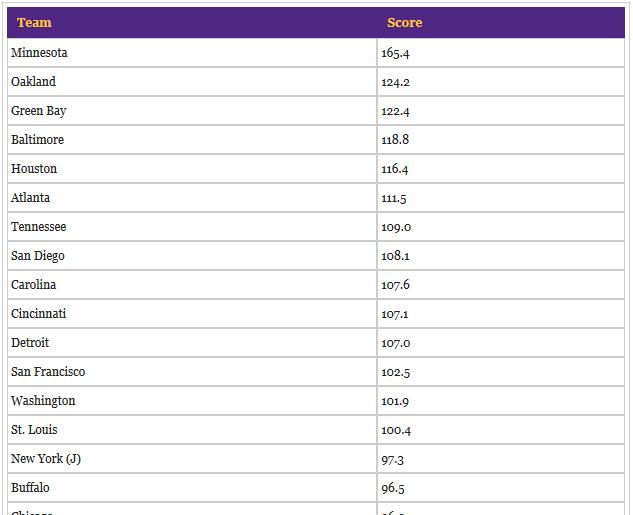 It’s said that you can’t evaluate a draft class until three years later, because you need at least that long to see which players have established careers and which ones are no longer in the league, rather than who won the popularity contest before the draft. Despite that, many talking heads on TV have been eagerly assigning grades to the just-concluded NFL draft, and the fans of each team eagerly follow the narrative. Even Arif Hasan has fallen victim to this temptation, although he’s at least trying to follow a methodology to determine the overall strength or weakness of each team’s 2014 draft class.
It’s said that you can’t evaluate a draft class until three years later, because you need at least that long to see which players have established careers and which ones are no longer in the league, rather than who won the popularity contest before the draft. Despite that, many talking heads on TV have been eagerly assigning grades to the just-concluded NFL draft, and the fans of each team eagerly follow the narrative. Even Arif Hasan has fallen victim to this temptation, although he’s at least trying to follow a methodology to determine the overall strength or weakness of each team’s 2014 draft class.
One of the interesting things about gathering Big Boards across the country and finding the different ways that evaluators grade the players is that it gives us an ability to take a look at the draft from their perspective. There’s a big stigma against “grading the draft,” that I don’t think makes a lot of sense because we’re so willing to share our opinions on the players and teams who drafted them in every other way.
It seems we can give opinions about individual players and their teams without criticism. but as soon as we summarize it in a letter grade, we’re doing something wrong and have to wait. Instead, it may be better to wait three years to judge it.
But that’s no fun, and we want feedback. We just have to acknowledge we have a high band of uncertainty and give our impressions of the draft.
But how about instead of inserting post-hoc opinions about our favorite team, we take a look at a metric we’ve already laid the groundwork for? Let’s compare a team’s draft capital to what the Big Boards accumulated said.
It’s not perfect, especially in a deep draft, but by assigning players in their rankings an amount of points equal to the trade charts’ equivalent pick value, we can find out what players are considered to be worth. Using the NFL Trade Value Chart (put together by Jimmy Johnson way back when), we can compare the amount of draft capital a team entered the draft with to the “value” of players selected. This is perhaps the most appropriate way to gauge the number of “steals” and “reaches” a team makes and quantifying.
Spoiler:




